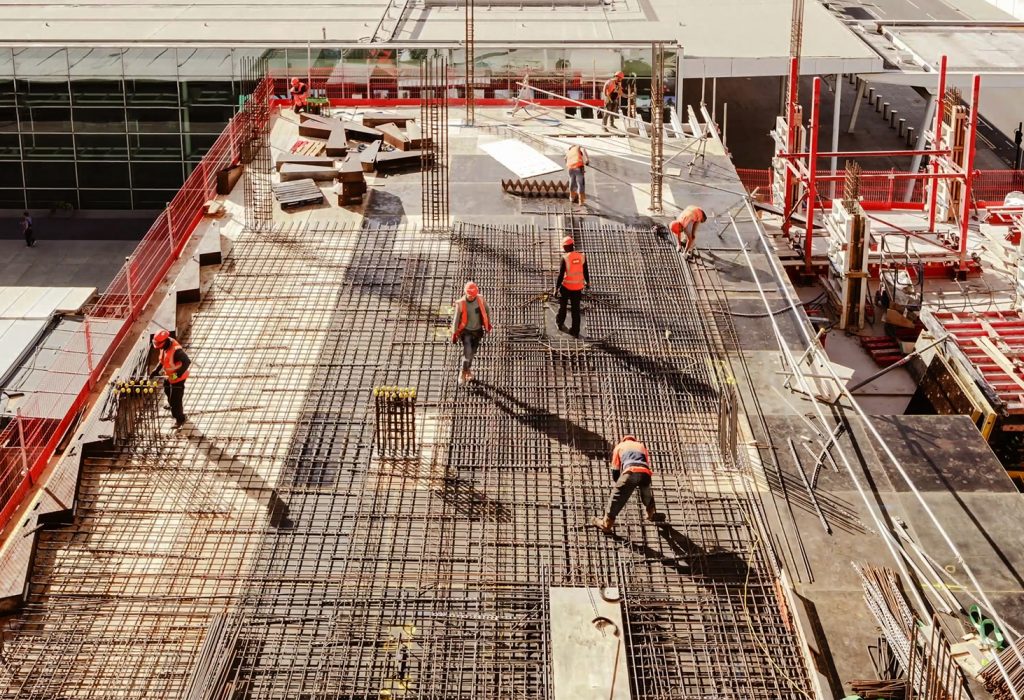
Embracing AI: reducing operational downtime in rail
With recent disruption, customer experience ratings have dropped, with delay compensation schemes becoming routinely used by many passengers. But what role could AI play in delivering improvements?

In essence, poor productivity and pace slippage in construction costs money and damages projects margins. According to Construction News, “For UK PLC, low productivity is arguably the single largest issue facing us today” and the recent Covid pandemic has exacerbated the challenge with other reports stating that “lockdown is causing productivity losses of around 35% on UK construction sites”.
What is productivity and how can it be improved?
Productivity is about the ratio of outputs to inputs and so improving it is all about ‘getting more for less’ – thereby enhancing your organisation’s profitability. Over time, there is a natural tendency for cost to creep into an organisation’s capacity, operating model design, structural hierarchies, and operating and site-based project processes. Teams tend to grow if left unchecked, processes can become inefficient, and workloads expand thereby creating more (internal) work. So, they should be challenged and adapted regularly by taking a ‘productivity lens’ to this endeavour to unlock new insights and opportunities. We would expect a typical improvement in project margin of roughly 3 (between 2 and 5) percentage points using the range of approaches outlined in this article.
It is common for productivity to be expressed in terms of ‘output per person’. But this narrow definition can be misleading. It is much better to broaden the definition and to break it down to understand (a) if those outputs are fully achieving the outcomes customers value (b) how well the inputs are being converted into those outputs and (c) how costly those inputs are in the first place? Extending the definition opens the full spectrum of ‘value for money’ opportunities and, by breaking it down that way, helps signpost an optimal sequence in which to target them.
Start by understanding true value through the eyes of the customer, so what is it about what we do that they are willing to pay for? And, in contrast, what ‘non value-adding’ activities are we therefore consuming our efforts and costs on? Adopting a structured approach is important to identifying and eliminating wasteful activities, and reducing costs. To ensure you are taking the right steps in the right sequence, start with measurement.


Use data to inform the measurement and analysis of both productivity and input costs


Construction firms and projects amass cost, specification and performance data that is often then poorly utilised. Through the insightful analysis of previous projects, new insights can be gained to inform the right measurement and targeted improvement of future projects.
People and work productivity comes from a combination of utilisation, performance, quality, and the input costs. Utilisation is a measure of the time spent on the primary tasks of adding value, whereas performance considers the efficiency with which they do so. Quality keeps the focus on getting things ‘right first time’ as rework (and ‘snagging’) do not add value in the eyes of the customer. Taking labour costs as one example, there is a lot to consider – such as, are all tasks adding value, do we have capacity available elsewhere, can we improve or automate the process, could work be outsourced or perhaps performed safely and satisfactorily by someone more junior (i.e. less expensive)?
Material productivity comes from a combination of yield and acquisition cost. A project materials analysis involves comparing estimated and actual materials spend across broadly comparable projects with similar characteristics and other industry indices. These insights can then be deployed to target opportunities with the supply base, informing value engineering and fact-based (target cost) negotiations with existing and potential new suppliers for future projects.
Drive productivity and pace on the construction site with the supply chain
When looking to improve productivity and pace on the construction site itself, start with a rapid assessment to understand status and priorities, pinpoint quick wins, and assess the size of the opportunity. Then follow with a deep dive into the plan and critical path, looking at lead-times and risks for key suppliers, materials, and equipment – so that effective performance measurement, weekly scheduling and look-ahead planning routines can be established swiftly. With those foundations in place, turn attention to short-interval performance control and issue escalation – making sure that task completion and staffing requirements are being met day-in-day-out.
Once those practices and controls are proving fruitful, look to actively engage with supply chain partners using data-informed structured problem-solving and collaborative planning sessions to unlock step-changes in project performance – perhaps rethinking certain aspects of the build sequence, optimising site logistics and material flows on site, heading-off supply chain risks, or making those off-site and modern methods (that are new to some members of the team) work in practice.


Get the right data to the right people at the right time … but keep it simple


Measures drive behaviour – so, putting in place the right cost, productivity and pace metrics on site is important. Whilst improvement starts with measurement, it must be supported by visible leadership support, direct observation, and an inquisitive and action-oriented mindset – asking ‘why?’ (typically) five times until root causes are uncovered and addressed.
Also, remember that site managers do difficult jobs which often require a long string of decisions to be made, often with incomplete data. So, the trick is to keep site measures to just a handful (typically relating to safety incidents, quality issues, task completion rate, resources matched to plan, etc.) and to put effective but simple structures and disciplines in place to get the right data to the right people at the right time to make the right decisions, without drowning them.
Keep on reviewing and continually improving your measures and ways of working with the people using them. The simpler and more valuable the approach in the eyes of the users, the more likely it is to be adopted. It is advisable to pilot and prove it on one project before rolling-it out across your teams, and then reinforce it repeatedly until it becomes business as usual.
Get in touch
Related Insights

With recent disruption, customer experience ratings have dropped, with delay compensation schemes becoming routinely used by many passengers. But what role could AI play in delivering improvements?

Train operating companies are under pressure to deliver a consistent positive experience, all while attempting to modernise. But how can this happen and could the Rail Reform Bill help?

As the industry prepares for the launch of Great British Railways (GBR), there is an opportunity to improve operational efficiency, reduce cost and improve passenger services.
Subscribe to our newsletter